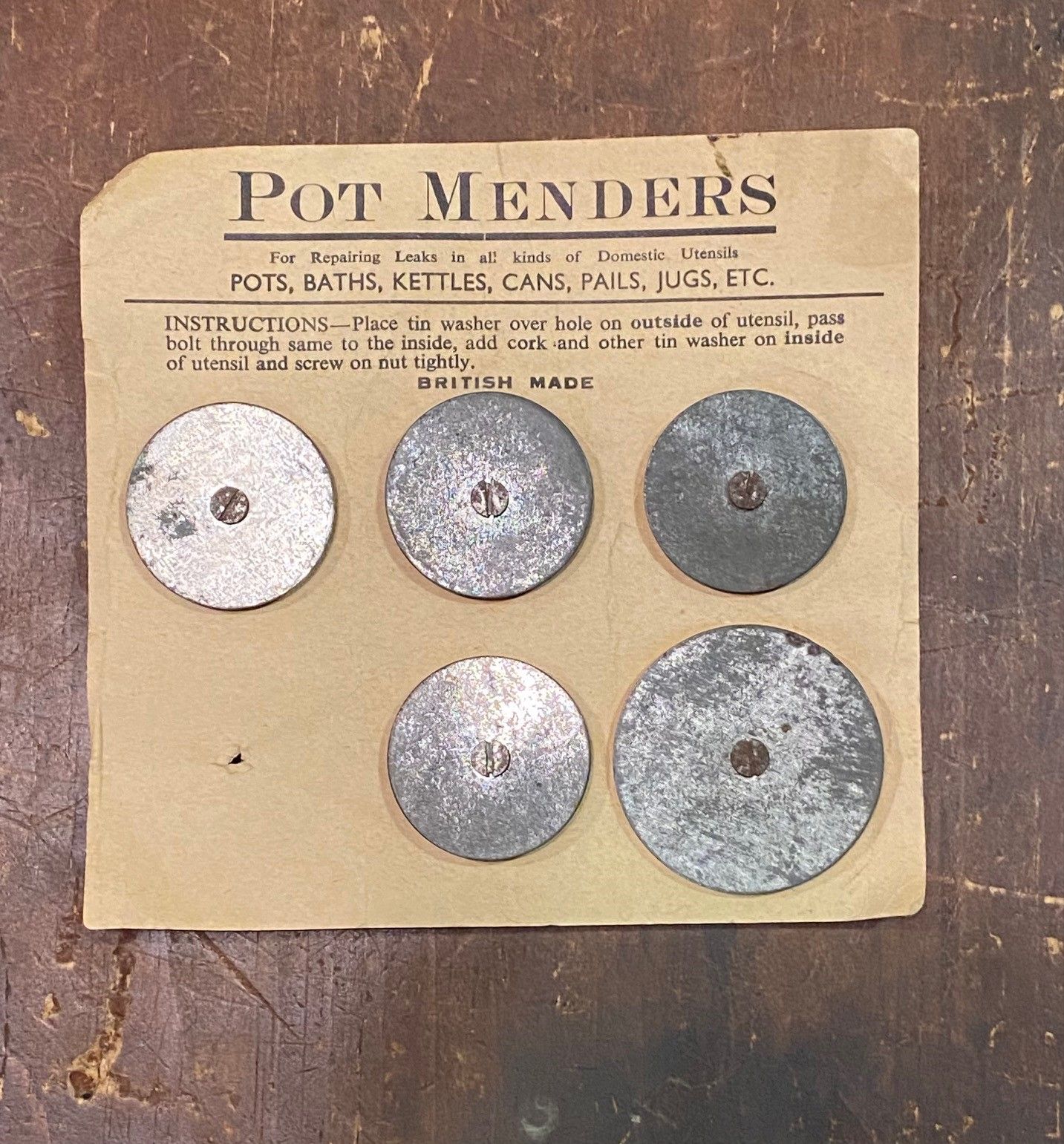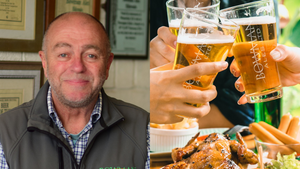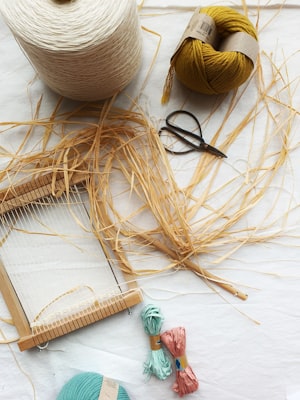This month we are featuring these innovative pot menders, found at Milestones Museum in Basingstoke. Read on to find out more about how pot menders were made popular in the 1940s when metal was short in supply.

Aluminium pots were often made quite thin to save metal and holes could easily burn through. Pot menders allowed you to repair holes in pots, pans and water tanks by covering the hole on both sides with the metal disk, often with a cork washer in-between.
But the idea of repairing pots was not a new one. In the 1800s, iron and copper pots were repaired by specialist pot repairers and travelling Tinkers. Tinkers were named after the ‘tink’ sound they made as they beat cold forged metal into the holes.
Even before this, there is evidence of pots being repaired in the Roman period. A popular method was to pour molten lead directly into the clay vessel to seal the hole with a plug of metal. Not a method recommended today! The plugs formed by this process are often found on archaeological digs and sometimes contain fragments of ceramic caught in the lead, which help to date the plugs. A safer method was to use copper alloy rivets to fill the holes and this can be seen on some surviving examples.
A method you might like to try to repair a cracked clay cooking pot today is to fill the pot with milk and place it in a larger cooking pan also filled with milk. The pan is then gently brought to the boil for an hour and allowed to cool completely before rinsing. The casein in the milk should seep into the crack and act as a food safe glue when dried!
Today, our pots tend to be higher quality and do not often burn through. Now, it's more so the case that pots and pans tend to wear out by losing their non-stick coating or breaking a plastic handle rather than developing a hole. After two years, non-stick coatings can start to degrade, lose their effectiveness and flake off. There is not much that you can do to fix this safely - however, buying a good quality but cheap stainless steel or iron pan, seasoning it and washing it properly will give you a pan that will last many times longer!
Find out more about how people in the past made things last longer by repairing and recycling, and discover how we can be greener by learning from our past to save our future in History Saves the World at Milestones Museum in Basingstoke until 4 September. You can even try your hand at mending a moth-eaten jumper!





